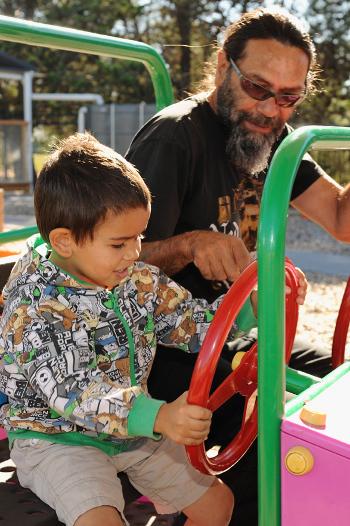Travelling
Duration/age

There are many different ways that you can travel. You can walk, go by car, bus, train or even by plane.
You might walk to a place because it is close and you have enough time to get there. Other times you would travel by transport because it would take too long or is too far to walk.
Where you are going and what you will do there will help you decide how you will travel. If you are going to the supermarket and you have lots of shopping to do you probably won’t walk because you will have lots to carry home.
We don’t have much shopping to buy today, but it will be heavy, so we will go in the car.
If you are going to be somewhere for a while will you take you car? You might not take your car because you have to pay for a parking space or it's difficult to find somewhere to park. If you are going shopping in town for a whole day it might be cheaper and faster to catch the train or bus into town.
How would you travel if you were going away for a holiday? Does it change if the holiday is at the local beach compared to another country?
Skills this activity improves
Why does this matter?
When you talk about different ways to travel you are modelling mathematical thinking and solving everyday problems. When you talk about where you are going and why, children begin to participate in mathematical thinking and to take individual maths skills and join them together. When you think about where a place is, how far away it is and the time it takes to get there, you are joining mathematical skills and thinking together.
When planning how you will travel and why, you will be using planning, measurement, capacity and estimation. Joining them together helps you to make decisions and to predict what will happen.
What does this lead to?
Talking about the different ways you can travel helps children to see that there are different ways to measure. You can measure using time – how long will it take. You can measure using weight – these bags are too heavy to carry. You can also measure with distance and number – the shops are close, they are only 1km away.
Using the concepts of measuring helps children to make choices and plan how to move around within space.
Language to use
- Close, near, far away, soon
- Distance, length
- Measurement
- Time, speed
- Weight
- How long, how soon, how close
Questions to use
- What will we do when we get there?
- Will we be able to park the car?
- What will we need to take with us?
- Is it close by?
- Can we travel there by public transport?
- It looks like it will rain. Does that change how we should get there?
- Are we there yet?
Useful tips
- You might also like to take a look at the activities Timetables and Here comes the bus.
- Remember to talk to your child in your home language.
More ideas
- Use a timer to time how long it takes you to get to your destination.
- Make a list of the different ways you can travel.
- Talk about where you go to catch the bus, the train or a plane.
Variation by age
Three to five year olds
- Google the route before leaving to help you decide how to travel.
- Print out and take the map with you and mark off the streets along the way.
- Make a list of the things you will do when you get to your destination.
Questions to ask
- Which direction will we go?
- Will we pass the park on the way to the shops?
- Where will we leave the car when we get to the shops?
- How long do you think we will be?
Language to use
- North, south, east, west
- Toward, behind, near, next to, corner
- Signs, landmarks, park, shops, buildings, street
- Time, length
- Car park, parking space
- Bus stop, train station


